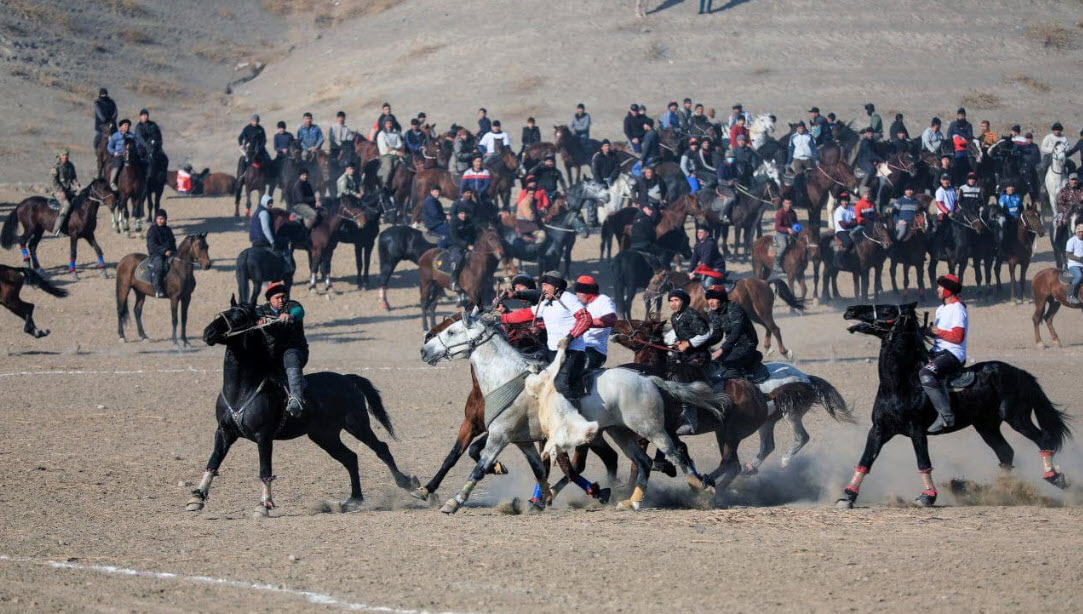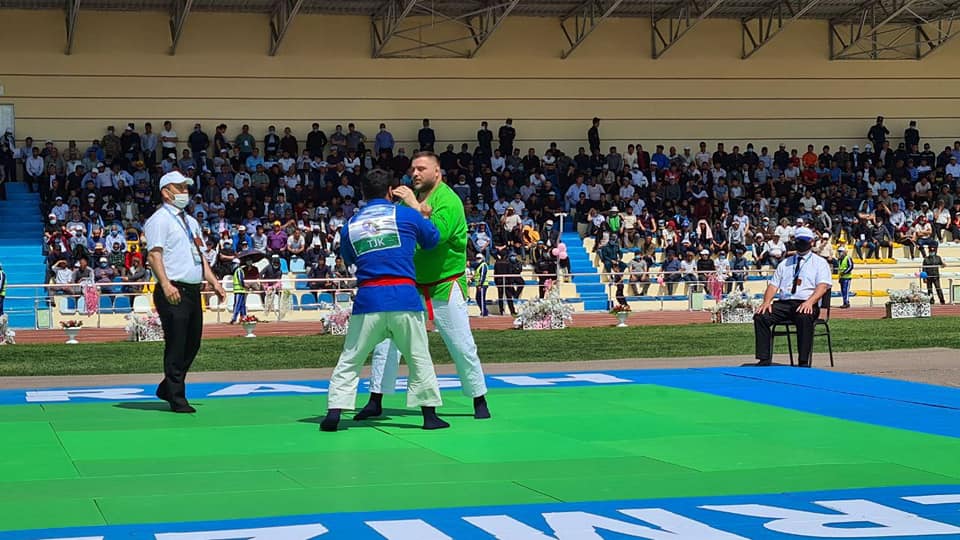National sports
The culture of each nation is unique, manifested in the language, traditions, customs, way of life, games. Preserving the continuity of spiritual values, norms, achievements is very significant, since this heritage is a necessary condition for the existence of a people as a nation. It is known that physical culture, having a long history, is an integral part of the general culture. And, for the public of Uzbekistan, the successes of both high-level sports and mass physical culture are important, where national sports that convey the social memory of the people are a bright component.
It should be noted that the way to modern sports lies through the national games. Let us list some traditional sports that have become an important component of the cultural memory of society and are being developed in modern Uzbekistan.

So, equestrian sport was and remains a very popular type of competition. For example, kupkari (ulak), a kind of equestrian competition, was formed at the beginning of the 2nd-3rd centuries BC, requiring resourcefulness and dexterity from riders. In the Turkic languages, the etymological meaning of the name "kupkari" was lost and traditionally began to be called by the name of the inventory - "ulak". In a competition in front of a hundred riders, they threw the carcass of a goat or a calf; riders tried to lift the carcass without dismounting; the task is to escape from the crowd, fighting off the pursuers. Ulak is, first of all, a competition, a game held during holidays, wedding celebrations, in which riders from nearby villages were involved, divided, according to the rules, into two groups. According to the results, the names of the winners were announced, who were awarded prizes, gifts (cattle, clothes, carpets, cash rewards, etc.). For thousands of years, the game has been formed, developed, gained popularity by the foundations of the people, inextricably linked with national traditions and way of life.
Alaman-baiga (poyga) is a folk race that reached its greatest development in the Middle Ages. It was held, as a rule, during the holidays, has not lost its significance, is included, as far as possible, in the program of holidays and sports and athletics. According to the rules: they saddled their horses, lined up in one line and, on a signal, rushed forward to a certain place, then the whole galloping cavalcade turned back; the one who returned first was considered the winner.
Baiga (poyga) - a long-distance jump. It was usually held during major complex competitions in the form of races over a distance of 50 km.
Chowgan - horse polo. The beginning of development dates back to the 7th-8th centuries, the game was one of the main entertainments of the warriors. The riders had special sticks (suljans) with which the ball was knocked out. The players were divided into two parties; each team tried to pass the ball into the opponent's goal. Sometimes the chougan was not played on horseback, reminiscent of modern field hockey.
In addition to equestrian sports, dorbozlik, the art of performing with a balance beam (langar) on a fixed rope, enjoyed success. The art of balancing act originated over 2.5 thousand years ago in the East, and then spread throughout the world. Rope walkers, who demonstrated excellent physical fitness and good coordination, performed during festivities and festivities.

The next sport that won the love of the people is kurash, the national belt wrestling. In the course of measures to revive the historical heritage, special attention was paid to this type of martial arts, since it is Uzbekistan today that has the primacy in its identification among other martial arts, the development of certain rules as a sport, and giving it international status. The duel, being a national treasure, embodied the centuries-old philosophy, values, respect for the opponent, humanism, honesty. What simple rules confirm, we recall: painful and suffocating techniques, grips below the waist and all kinds of manifestations of aggression and humiliation are prohibited; the fight takes place exclusively in the stance, it is forbidden to wrestle in the prone position, when the body of the opponent is supported on the third point, the fight stops. Kurash is, first of all, a competition of strength and dexterity with mutual respect of rivals for each other. All this makes kurash a simple, understandable, spectacular, dynamic and safe sport, accessible to both young men and people of advanced age. And, the terms, for example, “kurash”, “halol”, “taazim”, “tukhta”, “yonbosh” naturally entered the international sports vocabulary.
Interest in kurash wrestling led to the development of other types of martial arts. For example, this is confirmed by the popularity, especially among young people, - “Uzbek zhang sanati” (Uzbek martial art) - a modern type of martial art that embodies the centuries-old traditions of the martial arts of the peoples of the region. This martial art was created on the basis of the studied heritage, enriched with effective techniques of various combat systems. This martial art is characterized by certain areas: sports, health-improving (for the age after 40 years), art of the hand (3,000 hand techniques), martial art of the Temurids (work with a knife, saber, stick, spear), combat wrestling. The complexes of defensive and attacking actions are named after historical figures, which undoubtedly contributes to patriotic education.
Another no less interesting type of martial arts, which cannot be ignored, is Turon (the historical meaning of the word is dexterous, strong, fearless) - martial arts containing elements of various styles that were encountered in ancient times in fights that took place on the territory of modern Uzbekistan. According to experts, in the past in the trading cities there were people involved in the escort and protection of caravans following the Great Silk Road. They possessed unique combat skills that allowed them to successfully confront numerous and well-armed opponents. These martial skills, which have been properly systematized and reworked, form the basis of Turon martial arts. At the same time, it should be taken into account that martial arts carries a specific philosophy, a system of worldview, acquaintance with which allows a fighter to achieve the required level of psychological preparation.
The listed national games, physical exercises, national sports that have been formed over the centuries, of course, comprehensively developed not only physical qualities (strength, speed, endurance, dexterity, flexibility), but also moral and volitional ones. Gradually, the utilitarian significance of the physical direction of personality development was not only supplemented by the promotion of a healthy lifestyle, active physical education and sports, but turned into a part of everyday life, into a form of leisure, and grew into the concept of its further organic development.